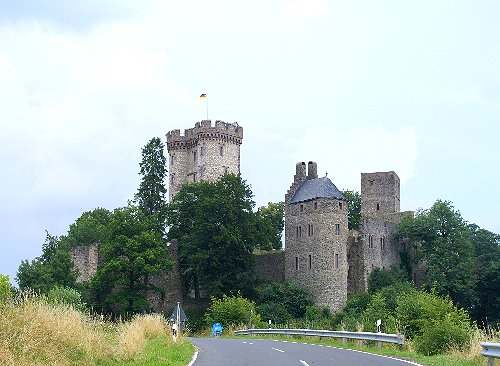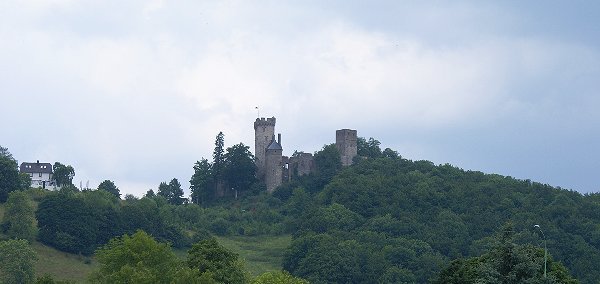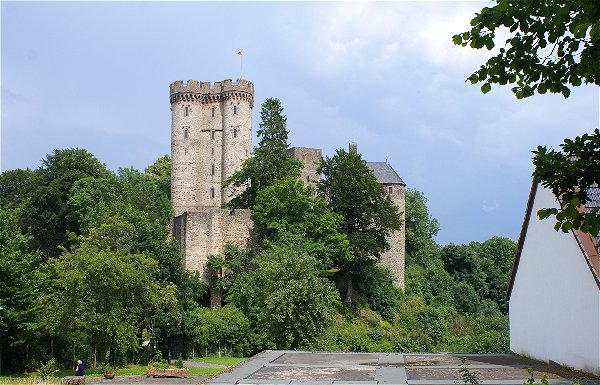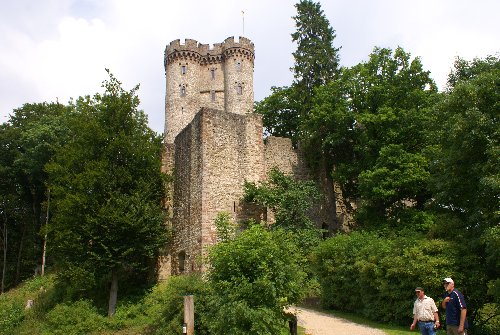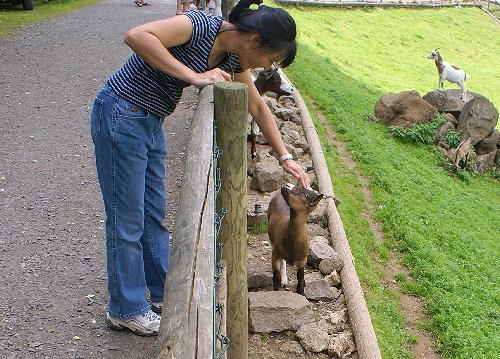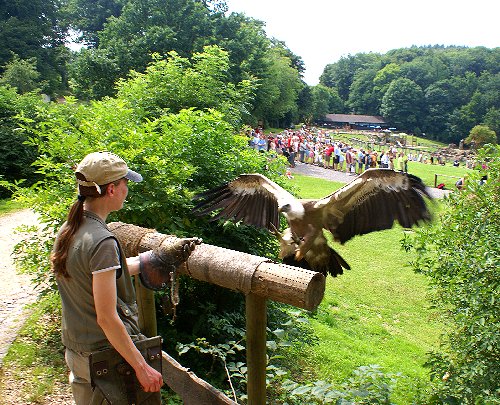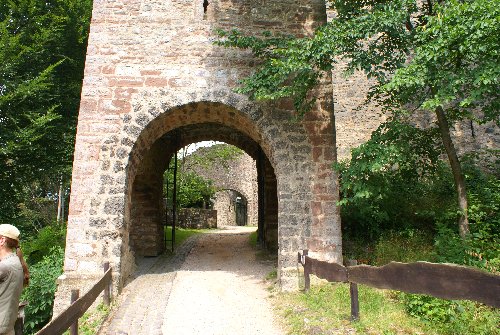Kasselburg is an impressive ruin but unfortunately has been transformed into a modest tourist trap. Nevertheless, it is worth visiting this 12th Century ruin. The castle was started by the Lords of Castel under the patronage of the Blankenheim family and was known as Castillburg up until the 1290s. The Blankenheim-Gerolstein family became the owners of the site and appropriately expanded it, including building the massive 37 meter keep in 1355. This family would eventually ally themselves with the Lords of Manderscheid and together formed the most powerful family combination in the Pfalz. Later, the Elector of Trier would gain possession of the castle, holding it from 1452 to 1611. The castle managed to survive the Thirty Years War, largely because it was abandoned and thus not defended. When the castle was presented to the Counts of Arenberg in 1647, it was already in a very bad state.
Photos taken in 2008.
By the 1800s, the castle belonged to Prussia and needed serious reconstruction. It received some significant work in the 1970s and 80s.
The castle is largely of Romanesque design, with the keep and inner ward built in the mid-1300s. Another tower, seen to the right in the left hand photo, was built as an independent keep in the 1300s and once stood independently of the castle. It was later integrated into the overall defense of the structure.
The most impressive element of the castle is the 37 meter (120 foot) high keep. This is a fully developed defensive and living structure, with muliple levels and individual heating systems for several of these. While it appears that there are two sets of stairs, there really is only one, with the other rounded half being widened living quarters.
As already mentioned, Kasselburg is a mild tourist trap. As part of the castle grounds there is an extensive animal pen with among other things a number of goats. They also have some wolves on the grounds, though these are not allowed to roam freely for obvious reasons.
Besides the goats, there are also demonstrations of some fabulous birds of prey. I believe this is an imperial eagle, though I'm not an ornithologist so can't be sure.
Right, the main entrance going into the outer ward of the castle.
